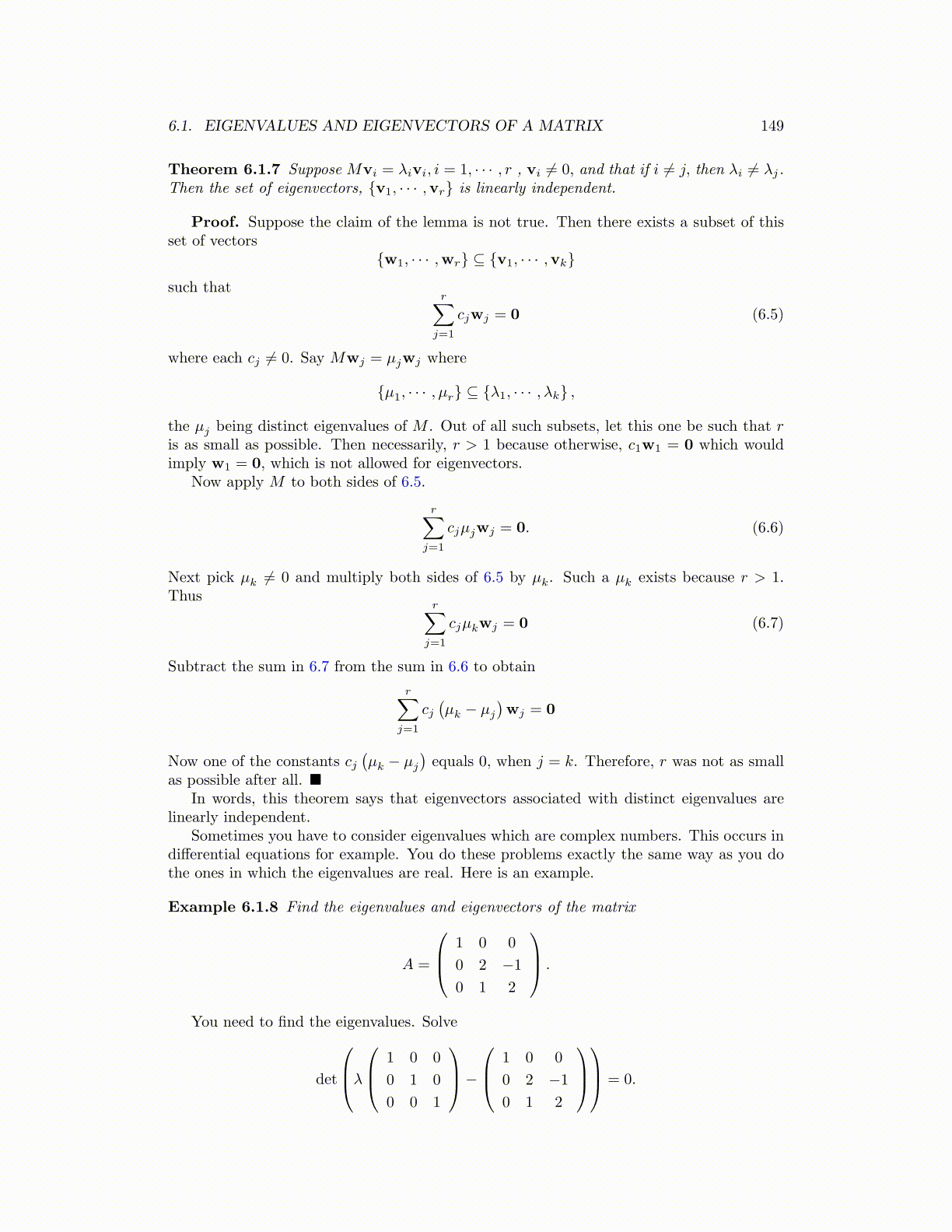
6.1. EIGENVALUES AND EIGENVECTORS OF A MATRIX 149
Theorem 6.1.7 Suppose Mvi = λivi, i = 1, · · · , r , vi ̸= 0, and that if i ̸= j, then λi ̸= λj.Then the set of eigenvectors, {v1, · · · ,vr} is linearly independent.
Proof. Suppose the claim of the lemma is not true. Then there exists a subset of thisset of vectors
{w1, · · · ,wr} ⊆ {v1, · · · ,vk}
such thatr∑
j=1
cjwj = 0 (6.5)
where each cj ̸= 0. Say Mwj = µjwj where
{µ1, · · · , µr} ⊆ {λ1, · · · , λk} ,
the µj being distinct eigenvalues of M . Out of all such subsets, let this one be such that ris as small as possible. Then necessarily, r > 1 because otherwise, c1w1 = 0 which wouldimply w1 = 0, which is not allowed for eigenvectors.
Now apply M to both sides of 6.5.
r∑j=1
cjµjwj = 0. (6.6)
Next pick µk ̸= 0 and multiply both sides of 6.5 by µk. Such a µk exists because r > 1.Thus
r∑j=1
cjµkwj = 0 (6.7)
Subtract the sum in 6.7 from the sum in 6.6 to obtain
r∑j=1
cj(µk − µj
)wj = 0
Now one of the constants cj(µk − µj
)equals 0, when j = k. Therefore, r was not as small
as possible after all. ■In words, this theorem says that eigenvectors associated with distinct eigenvalues are
linearly independent.Sometimes you have to consider eigenvalues which are complex numbers. This occurs in
differential equations for example. You do these problems exactly the same way as you dothe ones in which the eigenvalues are real. Here is an example.
Example 6.1.8 Find the eigenvalues and eigenvectors of the matrix
A =
1 0 0
0 2 −1
0 1 2
.
You need to find the eigenvalues. Solve
det
λ 1 0 0
0 1 0
0 0 1
−
1 0 0
0 2 −1
0 1 2
= 0.